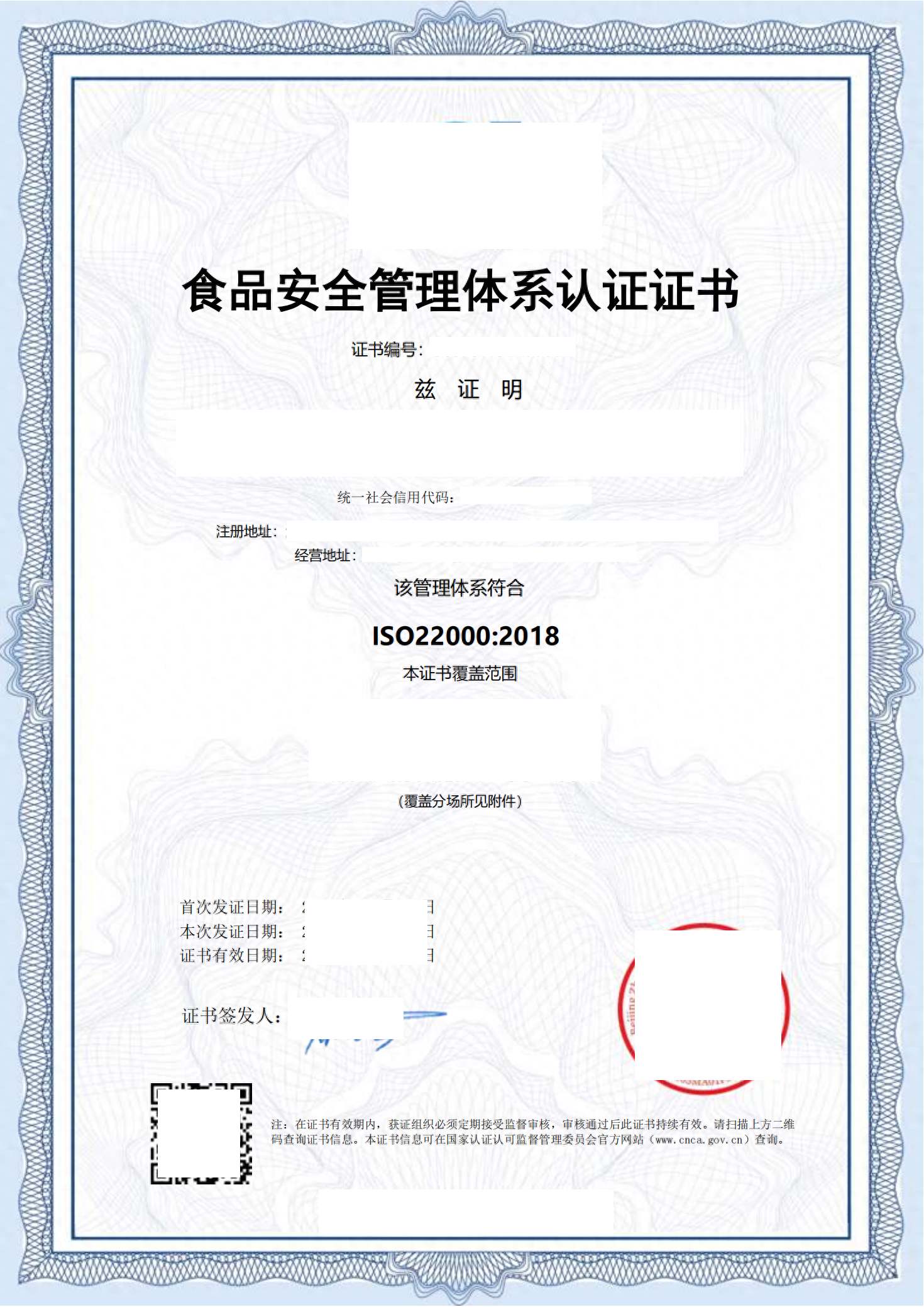
 Professional services are guaranteed
Professional services are guaranteed One on one full process guidance
One on one full process guidance Efficient and fast experience
Efficient and fast experienceThe ISO 22000 system applies to all organizations in the food chain, regardless of size and complexity, from farm to table. Its core goal is to ensure that food is safe and controllable throughout the entire process from farm to table through preventive control measures. The standard is compatible with ISO 9001 quality management system, supporting enterprises to achieve multi system integration.
This standard applies to all organizations in the food chain, including:
Food producers (such as planting, breeding, and processing enterprises)
Food suppliers (such as packaging, logistics, and warehousing companies)
Catering services (such as restaurants, hotels, food retailers)
Enterprises related to food additives, feed, and biotechnology
The ISO 22000 standard constructs a systematic food safety management system through the following key elements, ensuring risk control throughout the entire chain from raw materials to consumer terminals:
1. Prerequisite Plans (PRPs)
Including basic hygiene conditions (such as GMP, SSOP) and operating standards, ensuring that the production environment and facilities meet the basic requirements of food safety.
2. HACCP Plan
Based on hazard analysis and critical control points (CCPs), preventive management is implemented by identifying, monitoring, and controlling biological, chemical, and physical hazards.
3. PDCA cycle (planning implementation inspection improvement)
Plan: Develop policies, analyze hazards, and design control measures.
Implementation (Do): Implement operational standards and emergency plans.
Check: Monitor CCPs and verify the effectiveness of the system.
Improvement (Act): Continuously optimize the system through internal audits and management reviews.
4. Communication management
Ensure transparency of information both inside and outside the supply chain, including the transmission of risk information to suppliers, customers, and regulatory agencies, in order to collaboratively address potential threats.
5. Emergency preparedness and response
Establish contingency plans for unexpected incidents such as food contamination and recalls to quickly reduce the impact of accidents on consumer health and corporate reputation.
ISO 22000 provides multidimensional strategic value to enterprises through a systematic framework, covering risk management, compliance, market competition, and social responsibility, specifically reflected in:
1. Comprehensive risk prevention and control
Integrate HACCP and process methods, proactively identify and control physical, chemical, and biological hazards throughout the entire food chain, and reduce the risk of foodborne illnesses and recalls.
2. Global Compliance Access
Meet international regulations (such as EU EC 178/2002, US FSMA) and domestic food safety laws, eliminate trade barriers, and help products enter the international market.
3. Brand trust upgrade
By implementing a standardized and transparent management system, we aim to enhance consumer confidence and brand reputation, as well as strengthen customer loyalty and market competitiveness.
4. Improve operational efficiency
Optimize resource allocation and reduce waste; Strengthen supply chain collaboration and traceability capabilities, shorten problem response time, and reduce operating costs.
5. Continuous improvement mechanism
Based on the PDCA cycle and risk thinking, promote enterprises to dynamically adapt to regulatory changes and technological upgrades, and form a long-term improvement culture.
6. Demonstrating social responsibility
Ensuring public health and safety, implementing sustainable development goals (such as UN SDG 3), attracting ESG investment, and enhancing corporate social image
(I.) List of Application Materials
1. Core system documents
Food Safety Management Manual (including policies, objectives, and organizational structure).
HACCP plan and hazard analysis report, prerequisite plans (PRPs).
Program files (such as emergency plans, recall management, internal audit processes).
2. Proof of operation records
Critical Control Point (CCP) monitoring records (temperature, time, detection reports, etc.).
Internal audit report, management review records, and evidence of rectification.
3. Legal certification documents
Business license, food production license, product testing report (microbiology, additives, etc.).
4. Auxiliary materials
Employee training records, supplier audit documents, equipment maintenance records.
Record of past food safety incident handling (if any).
(II.) Application requirements
1. Clear legal person status: The applying enterprise must be an entity with clear legal person status, ensuring its stability and reliability in legal and commercial operations.
2. Legal business qualifications: Enterprises need to have relevant administrative licensing documents, such as business license, health license, production license, etc.
3. Establishment of food safety management system: Enterprises should establish and implement a food safety management system in accordance with the requirements of GMP (Good Manufacturing Practice) and ISO 22000 management system.
4. Effective operation of the system: The ISO 22000 system should operate effectively for at least three months, during which at least one internal audit should be conducted, and any non conformities found during the audit should be confirmed, rectified, and tracked for verification.
5. The product meets food safety requirements: Enterprises need to provide relevant evidence that the product meets food safety requirements.
6. Compliance with regulations: Enterprises need to comply with regulations and legal requirements related to food safety to ensure product compliance.
ISO 22000 certification is the core process of verifying that a company's food safety management system complies with international standards. The main process is as follows:





Wechat ID:Siterui888888
Add a wechat friend to get free plans and quotations


 Contact
Contact




 定制化解决方案
定制化解决方案 专业咨询指导
专业咨询指导 透明化服务
透明化服务 长期顾问式合作
长期顾问式合作